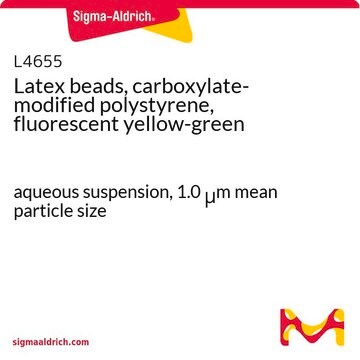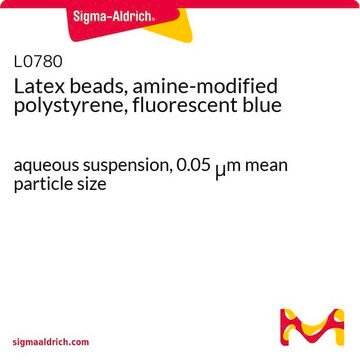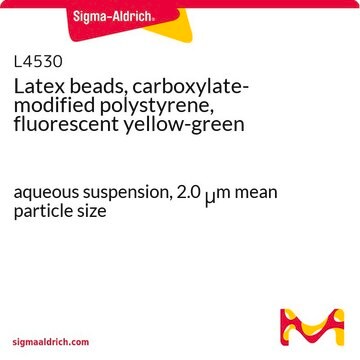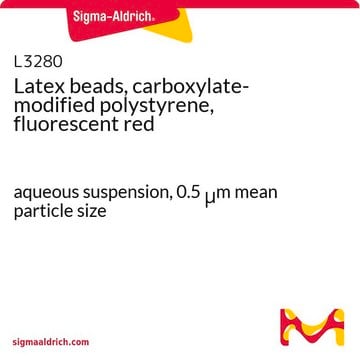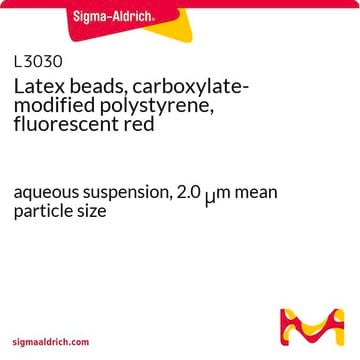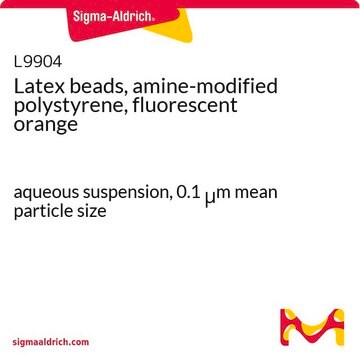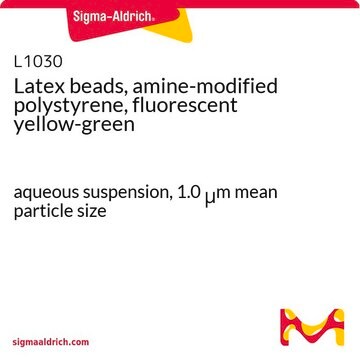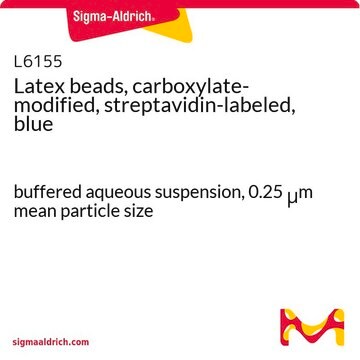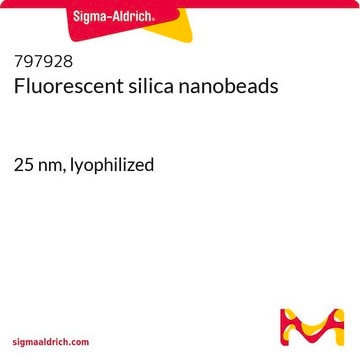This product has a solid content (bead content) of 2.5% (w/w). The product density is reported on a lot specific basis with a range of 1.04 - 1.06 g/mL. The bead number can be calculated and then diluted according to the required number. The formula for determining the number of beads in the samples is: Bead number = (6.03 x 10^10) x (percent solids) / 3.30 x (bead diameter).
L5155
Latex beads, carboxylate-modified polystyrene, fluorescent yellow-green
aqueous suspension, 0.03 μm mean particle size
Synonim(y):
Fluorescencyjne kulki lateksowe
Wybierz wielkość
312,00 zł
Wybierz wielkość
About This Item
312,00 zł
Polecane produkty
Formularz
aqueous suspension
skład
Solids, 2.5%
metody
cell based assay: suitable
średnia wielkość cząstek
0.03 μm
fluorescencja
λex ~470 nm; λem ~505 nm
Zastosowanie
cell analysis
Szukasz podobnych produktów? Odwiedź Przewodnik dotyczący porównywania produktów
Zastosowanie
Kod klasy składowania
10 - Combustible liquids
Klasa zagrożenia wodnego (WGK)
WGK 3
Temperatura zapłonu (°F)
Not applicable
Temperatura zapłonu (°C)
Not applicable
Wybierz jedną z najnowszych wersji:
Certyfikaty analizy (CoA)
Nie widzisz odpowiedniej wersji?
Jeśli potrzebujesz konkretnej wersji, możesz wyszukać konkretny certyfikat według numeru partii lub serii.
Masz już ten produkt?
Dokumenty związane z niedawno zakupionymi produktami zostały zamieszczone w Bibliotece dokumentów.
Klienci oglądali również te produkty
-
What is the concentration of product L5155?
1 answer-
Helpful?
-
Active Filters
Nasz zespół naukowców ma doświadczenie we wszystkich obszarach badań, w tym w naukach przyrodniczych, materiałoznawstwie, syntezie chemicznej, chromatografii, analityce i wielu innych dziedzinach.
Skontaktuj się z zespołem ds. pomocy technicznej